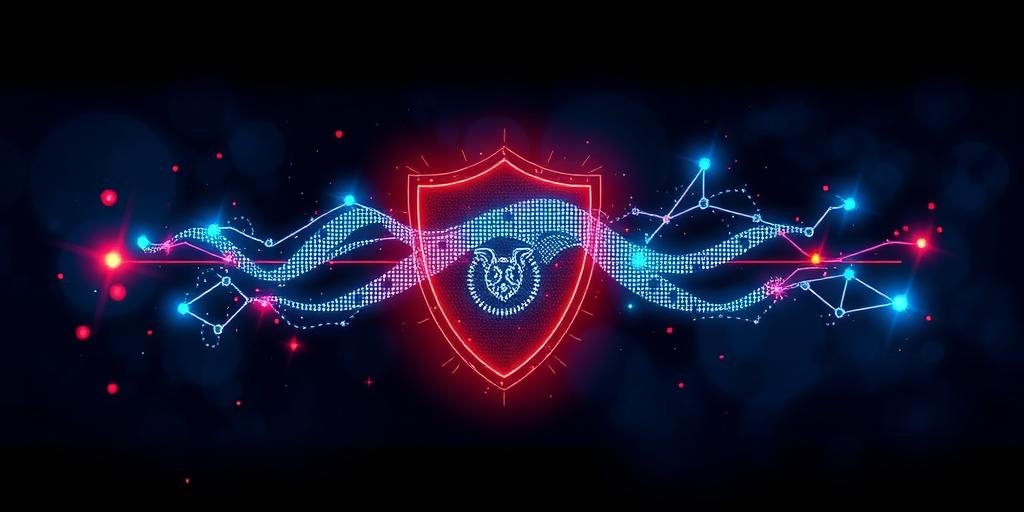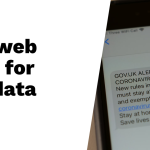Dark web monitoring is all about finding and tracking sensitive information that ends up in the hidden parts of the internet not seen by regular search engines. It plays a crucial role in spotting leaked data, like passwords or personal details, before they make it to cybercriminals. Organizations benefit largely from this practice; they can detect data breaches early, protect against identity theft, and strengthen their cybersecurity posture. However, risks exist too: unauthorized access can compromise accounts and damage reputations. To navigate these challenges effectively, continuous monitoring tools should be used alongside employee education and regular security audits to address potential threats promptly.
Table of Contents
- Definition of Dark Web Monitoring
- Key Benefits of Dark Web Monitoring
- Types of Risks Associated with the Dark Web
- Best Practices for Dark Web Monitoring
- Challenges and Limitations of Dark Web Monitoring
- Frequently Asked Questions
1. Definition of Dark Web Monitoring

dark web monitoring is the process of searching for and tracking sensitive information related to individuals or organizations on the dark web, an area of the internet that is not indexed by standard search engines. This part of the web is often associated with illegal activities, where compromised data, such as passwords, financial details, and personal information, can be bought and sold among cybercriminals. Monitoring services utilize specialized tools to scan these hidden sites for specific data, generating alerts when sensitive information is detected. This proactive approach helps identify potential threats to security early on, allowing individuals and organizations to take necessary actions to protect their identities and assets. Additionally, dark web monitoring may extend to social media and forums where stolen data is shared, further enhancing its coverage. By keeping a close eye on these hidden corners of the internet, users can gain valuable insights that inform their cybersecurity strategies and help combat data theft.
2. Key Benefits of Dark Web Monitoring

Dark web monitoring offers several key benefits that can greatly enhance an organization’s cybersecurity strategy. One of the primary advantages is the early detection of data breaches. Continuous monitoring can identify compromised data before it becomes public knowledge, allowing organizations to respond swiftly and prevent further damage. For instance, if an employee’s credentials are found on the dark web, the organization can take immediate action to secure accounts and mitigate risks.
Another important benefit is the mitigation of identity theft and fraud. With timely alerts, individuals can take preventative measures, such as freezing credit or changing passwords, thereby protecting themselves from potential financial loss. Organizations also benefit from enhanced cybersecurity strategies, as insights gained from dark web monitoring can inform defenses and highlight vulnerabilities.
In addition to security enhancements, monitoring the dark web helps protect an organization’s reputation. By addressing potential leaks before they reach the public, companies can uphold their brand integrity and maintain customer trust. Furthermore, dark web monitoring increases risk awareness, providing valuable insights into threats associated with third-party breaches. This allows organizations to implement preemptive measures and safeguard their operations.
Moreover, early detection can lead to significant cost savings. Organizations can avoid the expensive consequences of data recovery efforts and regulatory penalties by addressing issues promptly. Informed decision-making is another benefit, as the data collected can support strategic planning and risk assessments, guiding organizations in resource allocation and security investments.
Lastly, demonstrating proactive dark web monitoring can enhance customer confidence. Customers appreciate knowing that an organization is actively working to protect their data, which can provide a competitive advantage in today’s market.
| Benefit | Description |
|---|---|
| Early Detection of Data Breaches | Continuous monitoring can help identify data breaches as they occur or before they become public knowledge, enabling quicker response. |
| Mitigation of Identity Theft and Fraud | Monitoring services can alert users if their personally identifiable information (PII) is found, allowing for preventive actions such as credit freezes and password changes. |
| Enhanced Cybersecurity Strategy | Information gathered from dark web monitoring can inform organizations of potential threats and vulnerabilities, improving overall cybersecurity posture. |
| Reputation Protection | Organizations can safeguard their brand and reputation by addressing potential threats related to leaked corporate data before they escalate. |
| Risk Awareness | Dark web monitoring provides insights into third-party breaches and potential threats associated with supply chain partners, allowing for preemptive measures. |
3. Types of Risks Associated with the Dark Web
Data breaches pose a significant risk, as exposed information about customers and employees can lead to serious financial losses and damage to reputation. For instance, when a company’s database is compromised, sensitive data may be sold on the dark web, leaving organizations scrambling to contain the fallout.
Identity theft is another major concern. Stolen credentials can provide cybercriminals with unauthorized access to personal and financial accounts, often resulting in fraudulent activities that can devastate individuals and businesses alike.
The misuse of brands and impersonation can severely impact consumer trust. Cybercriminals may create fake websites or accounts that mimic legitimate businesses, tricking customers into sharing personal information or making purchases. This not only affects the victims directly but can also tarnish the brand’s reputation in the long run.
Companies may face legal and regulatory penalties if they fail to adequately protect sensitive data. Lawsuits and fines can arise from data breaches, leading to financial strain and loss of credibility in the market.
Cyber espionage is another risk, where competitors exploit stolen data to gain unfair advantages. This can involve accessing trade secrets or business strategies, ultimately undermining the competitive landscape.
Ransomware threats are prevalent, where compromised data may lead to ransom demands from attackers seeking payment to restore access. This can disrupt operations and lead to additional costs beyond just the ransom.
Phishing scams are also enhanced by information found on the dark web. Stolen personal information can be used in targeted scams, where cybercriminals attempt to trick individuals into divulging more sensitive data.
Loss of intellectual property is a significant risk, with sensitive business information potentially being sold to competitors or malicious actors, jeopardizing a company’s innovation and market position.
Supply chain vulnerabilities should not be overlooked either. Compromised third-party data can lead to risks that affect the entire supply chain, exposing organizations to cascading failures and breaches.
Lastly, an increased attack surface is a consequence of more exposed data. As more information becomes available on the dark web, individuals and organizations become prime targets for cyber attacks, resulting in a heightened need for vigilance and proactive measures.
- Data Breaches: Exposed data can lead to significant financial losses and legal repercussions.
- Identity Theft: Stolen credentials can facilitate unauthorized financial activities.
- Brand Misuse and Impersonation: Fraudulent use of brand names can harm consumer trust and loyalty.
- Legal and Regulatory Penalties: Companies may face lawsuits for failing to protect sensitive data.
- Cyber Espionage: Competitors may exploit stolen data for unfair advantages.
- Ransomware Threats: Compromised data can lead to demands for ransom to regain access.
- Phishing Scams: Personal information may be used in targeted scams against individuals and organizations.
- Loss of Intellectual Property: Sensitive business information can be sold to competitors or malicious actors.
- Supply Chain Vulnerabilities: Compromised third-party data can affect the entire supply chain.
- Increased Attack Surface: More exposed data can lead to more targeted attacks against individuals and organizations.
4. Best Practices for Dark Web Monitoring
Implementing continuous monitoring is essential. By regularly scanning the dark web, organizations can quickly detect any compromises to their sensitive data. This proactive approach allows for immediate action, reducing potential damage. Integrating dark web intelligence with existing cybersecurity solutions enhances overall protection. When dark web data feeds into broader security systems, it improves threat detection and response capabilities. Regular audits of security practices are also vital. Frequent reviews help identify vulnerabilities, ensuring that defenses remain strong against potential breaches.
Educating employees about cybersecurity risks is crucial. Training staff on topics like phishing and safe online practices can significantly reduce the likelihood of successful attacks. Utilizing a multi-faceted approach is recommended, combining technology with human insights to validate findings and minimize errors. Staying updated on emerging dark web trends can inform strategies and defenses, helping organizations adapt to evolving risks.
Establishing incident response plans is another key practice. Organizations should be prepared to act swiftly if their data is found on the dark web. Collaborating with law enforcement can also be beneficial. Sharing findings with authorities can help combat broader cybercrime and contribute to community safety. Additionally, limiting data exposure is important. Organizations should avoid sharing unnecessary information that could be exploited on the dark web. Lastly, engaging with professional services can enhance monitoring capabilities. Considering outsourcing to experts can provide organizations with more robust and effective dark web monitoring.
5. Challenges and Limitations of Dark Web Monitoring
Dark web monitoring faces several challenges that can limit its effectiveness. One significant issue is contextual understanding; automated tools often struggle to grasp the nuances of the data they encounter, which can result in false positives or negatives. For instance, a mention of an email address might not indicate a breach, but without context, the system may flag it as a threat.
Access limitations present another hurdle. Certain areas of the dark web require specific credentials or access methods, creating gaps in monitoring coverage. This can leave organizations vulnerable if critical data is traded in these inaccessible spaces.
Moreover, dark web monitoring is inherently reactive. Although it can alert organizations to exposed data, it cannot prevent that data from being leaked in the first place. This limits its capacity as a standalone solution for cybersecurity.
The volume of data on the dark web is immense, which can overwhelm monitoring tools. As a result, some threats might go unnoticed. Cybercriminals are also constantly evolving their tactics, making it necessary for monitoring strategies to adapt regularly. This dynamic environment demands continuous attention and resources.
Relying solely on dark web monitoring can lead to a false sense of security. Organizations might become complacent, thinking they are protected when, in reality, they need to maintain a broader cybersecurity strategy. Effective monitoring can also be resource-intensive, requiring time and financial investment that some organizations may struggle to allocate.
Legal and ethical concerns cannot be overlooked either. The complexities surrounding privacy and the legality of certain monitoring practices can pose risks to organizations. Finally, there’s the skill gap; finding professionals who can accurately interpret dark web data is often a challenge, hindering effective monitoring efforts.
Frequently Asked Questions
1. What is dark web monitoring and why is it important?
Dark web monitoring looks for your personal information on the dark web, which is a part of the internet not indexed by search engines. It is important because it helps you know if your sensitive data, like passwords or credit card numbers, is being sold or used illegally.
2. What are the main benefits of dark web monitoring?
The main benefits include early warning of identity theft, protection of sensitive information, and peace of mind. By knowing what’s out there, you can take steps to secure your data before it gets misused.
3. Are there any risks associated with dark web monitoring?
Yes, some risks include overconfidence in security, potential invasion of privacy, and misunderstanding the findings. Not every mention of your info means you’re in danger, so it’s important to interpret the results carefully.
4. How can I practice best practices for dark web monitoring?
Best practices include using reputable monitoring services, regularly updating your passwords, enabling two-factor authentication, and staying informed about security threats. These steps help you maintain control over your online presence.
5. Who should consider dark web monitoring?
Individuals who want to protect their personal information, businesses looking to safeguard customer data, and anyone concerned about identity theft should consider dark web monitoring as a proactive measure.
TL;DR Dark web monitoring involves tracking sensitive information on the dark web to identify leaks or stolen data. Key benefits include early detection of data breaches, mitigation of identity theft, enhanced cybersecurity strategies, protection of reputation, and increased risk awareness. However, risks such as data breaches, identity theft, brand misuse, and legal penalties exist. Best practices for effective monitoring include continuous scanning, integrating with other cybersecurity measures, conducting regular audits, educating employees, and using a multi-faceted approach. Challenges include limitations in context understanding, access issues, and the primarily reactive nature of monitoring. Overall, it is crucial for safeguarding sensitive information and reinforcing security.





